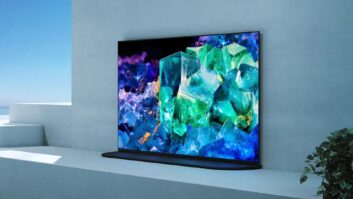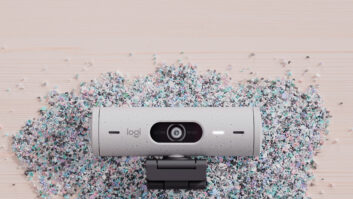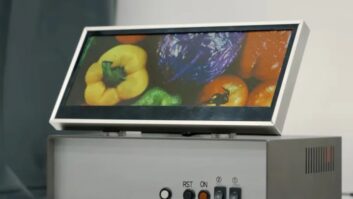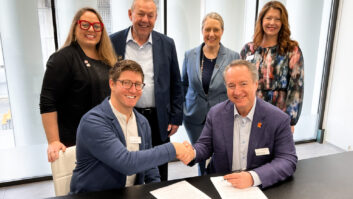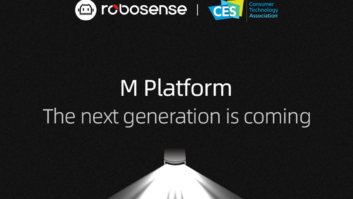Over the past five years — since CableLabs began contributing this column to TWICE Magazine’s annual CES edition — the major planks of the cable industry’s OpenCable initiative centered on platform development in and of itself, and, more recently, launches within cable systems across the United States.
In 2007, the OpenCable story deepened — substantially. The nation’s largest cable operators delivered on their commitment to launch the OpenCable Platform, both in head-ends and in set-top terminals. Time Warner Cable, as one example, reported a deployment of 150,000 OpenCable-based set-top boxes in the third quarter; all major cable operators are on track to be fully OpenCable-compliant by the end of ’08 — as promised.
A quick refresher: The software portion of the OpenCable Platform is a middleware layer for digital set-top boxes, cable-ready HDTVs, and other consumer devices. It exists to create a contiguous and national cable footprint, to unite the industry’s disparate interactive services and geographic boundaries.
The point of it, in part, is to enable service portability. Service portability makes it possible for a consumer to enter a retail store, purchase an HDTV with a cable service package, take it home and instantly access all cable services — including advanced products requiring two-way connectivity, like video on demand, or “clicking” the remote to vote on a contestant in a reality show.
If there was a “part one” of the OpenCable story, it was the CableCARD (called “point of deployment module” in its earlier days). In July 2007, the cable industry successfully met a Federal Communications Commission deadline to deploy exclusively set tops that use a removable CableCARD for content security — and to cease deploying set-tops that used embedded security.
Admittedly, the “7/07” CableCARD cutover was not trivial. Small armies of cable system employees were deployed nationwide to make it happen. It required extensive revisions to head-end equipment, inventory management, operations and customer care systems.
It was a difficult mission, but it is a mission accomplished.
One side note that is vitally important to this readership: In and of themselves, CableCARDs are two-way devices. It is simply incorrect to wonder when a two-way CableCARD will be available, or why today’s CableCARD’s aren’t two-way. They are, and have been ever since their inception, 12 years ago. It is the host devices — those containing the slot to house the card — that are not two-way. It’s an important distinction.
The OpenCable Platform consists of two primary elements: hardware and software. The hardware portion is the successful deployment of set tops and televisions equipped with the CableCARD slot. The benefit of this is the consumer’s ability to purchase a cable-ready television in one cable operator’s geographic territory, then move it into another cable territory — and still successfully receive scrambled cable signals.
With that in place, the software portion of the OpenCable Platform — originally known as “OCAP,” for “OpenCable Applications Platform” — is the primary focus of the cable industry’s efforts now.
Although it is technically possible for cable providers to host interactive applications from program networks without the OpenCable platform, it is a decidedly sub-optimal situation. For one thing, content owners would be required to port their applications separately, to dozens of proprietary CE or set-top operating systems.
Without a standard and ubiquitous software environment like the OpenCable Platform, content providers are forced to support multiple software platforms, which don’t always interoperate. As a direct result, program networks have been reluctant to develop interactive materials that run on only a portion of cable’s national coverage area.
Not only is the OpenCable Platform available — it is evolving. A version aimed at serving premium (scrambled) video content to personal computers, for instance, was put into play with Microsoft last year. It’s called OCUR, for OpenCable Unidirectional Receiver.
Augmentations to the OpenCable specification support advanced advertising, home networking, downloadable security, IP content and mobile devices.
As much as the OpenCable platform has progressed, its support by the FCC in regulations has not been forthcoming. As this article was being written, in fact, a decision was pending from the FCC about the ongoing “two-way plug-and-play” negotiations between the cable and consumer electronics sectors.
A resolution to the two-way plug-and-play discussions matters because the outcome will impact how consumers access cable-delivered two-way services, such as video on demand and interactive television.
Notably, major consumer electronics manufacturers with more than 50 percent of the DTV market, programming networks and the Motion Picture Association of America came out in favor of the OpenCable Platform.
And dozens of cable program networks have participated in interoperability tests hosted by CableLabs over the past three years. And, the OpenCable platform is an international standard, supported by the International Telecommunications Union.
In short, the OpenCable Platform exists. It is deployed. It is ready to be further deployed.







